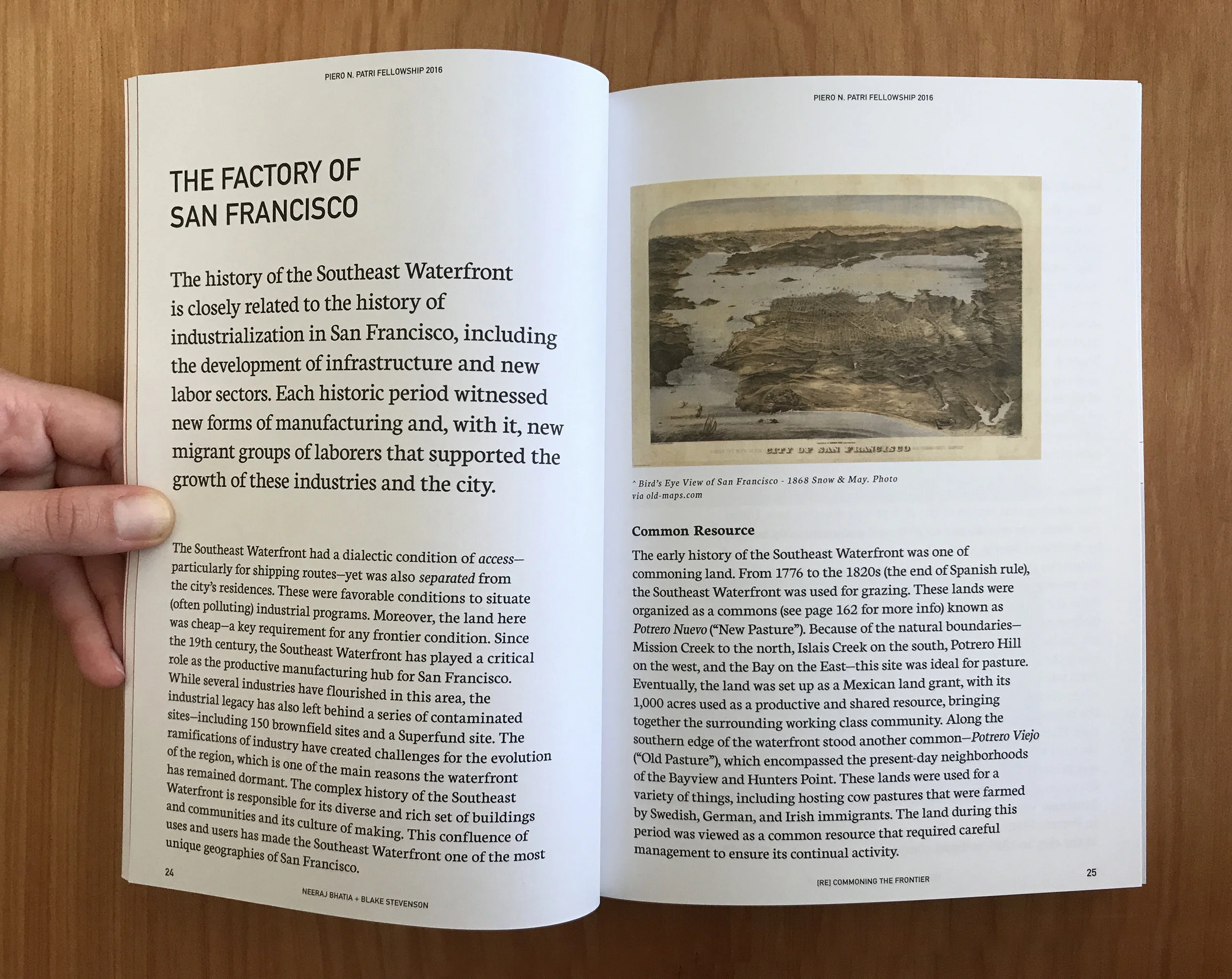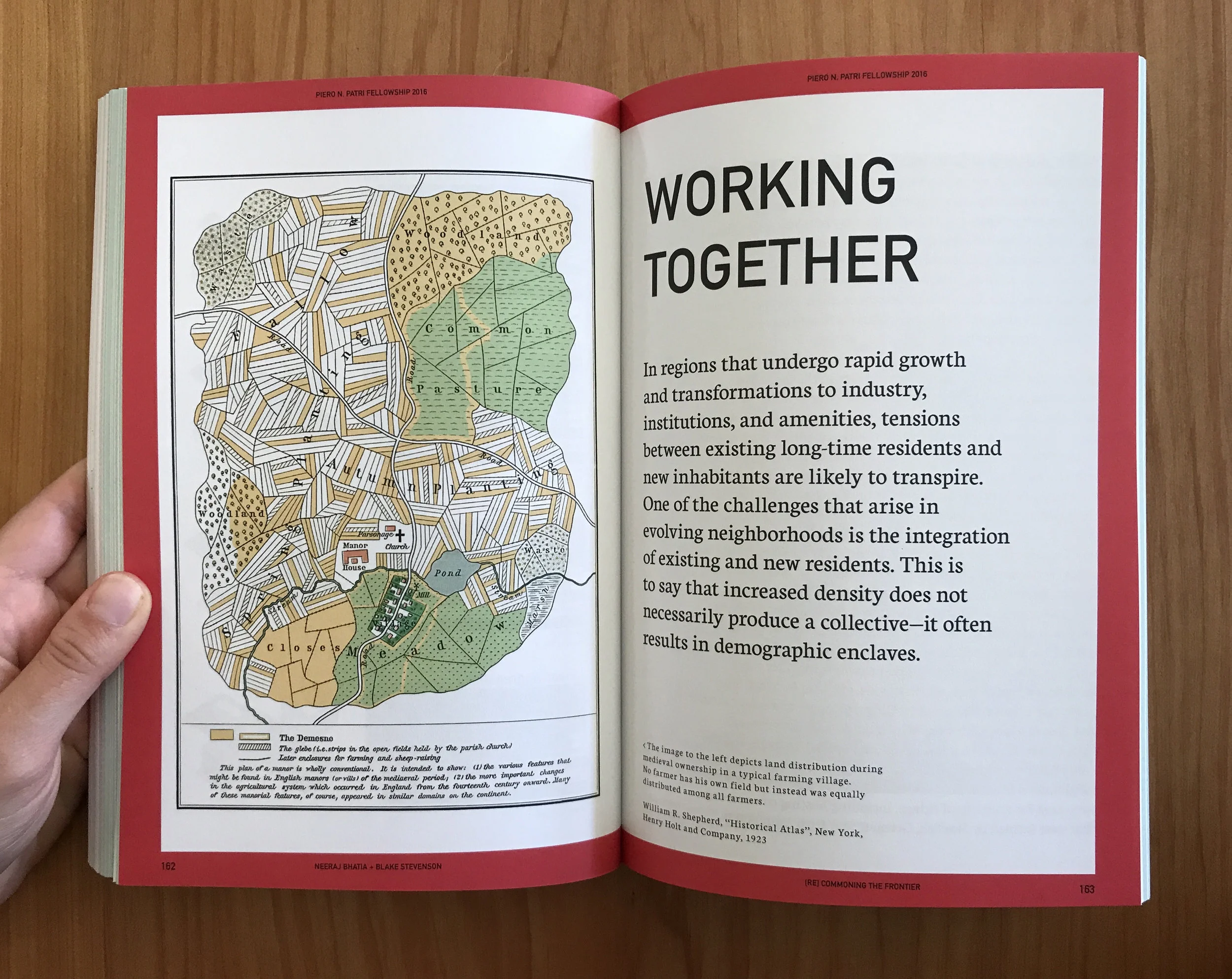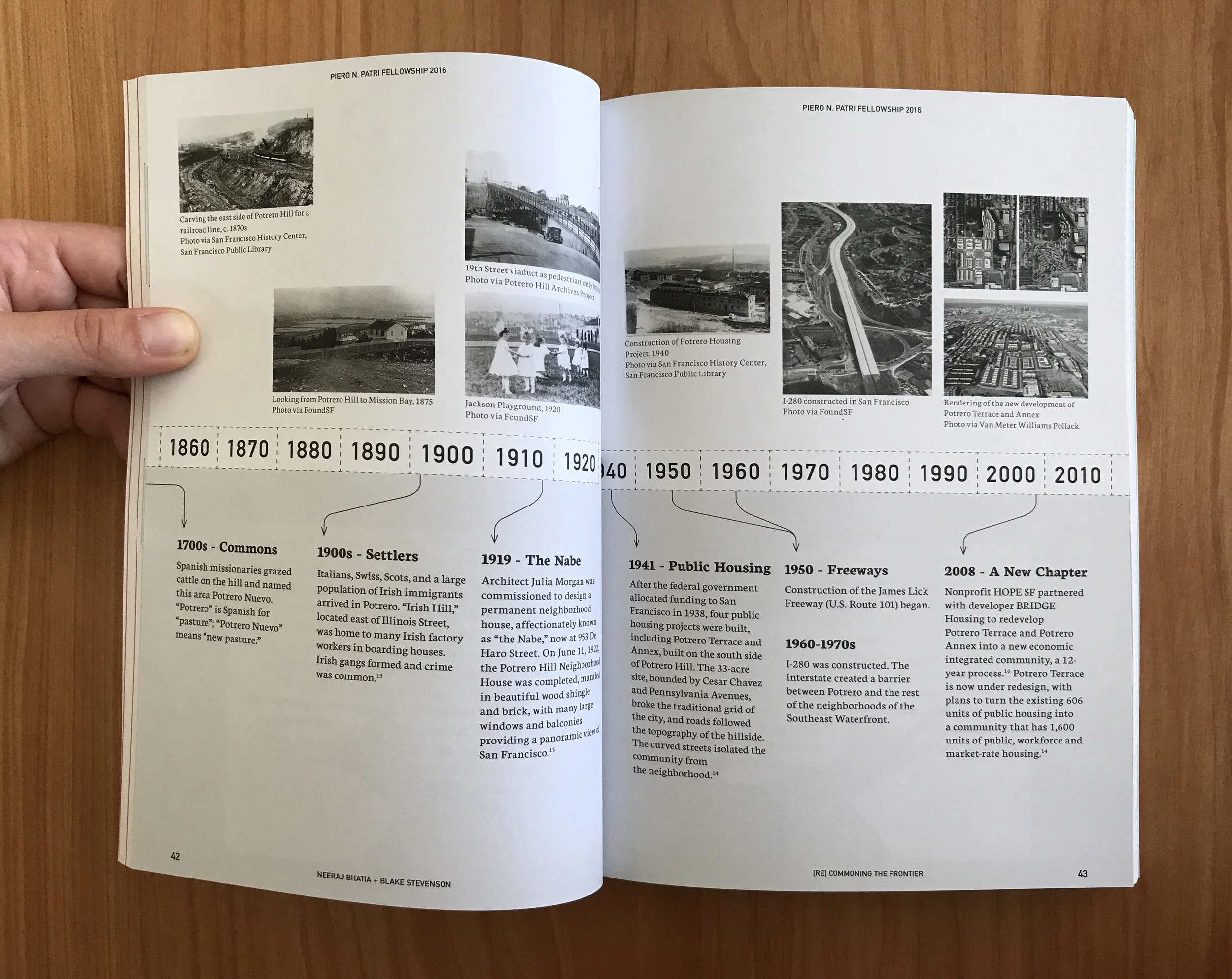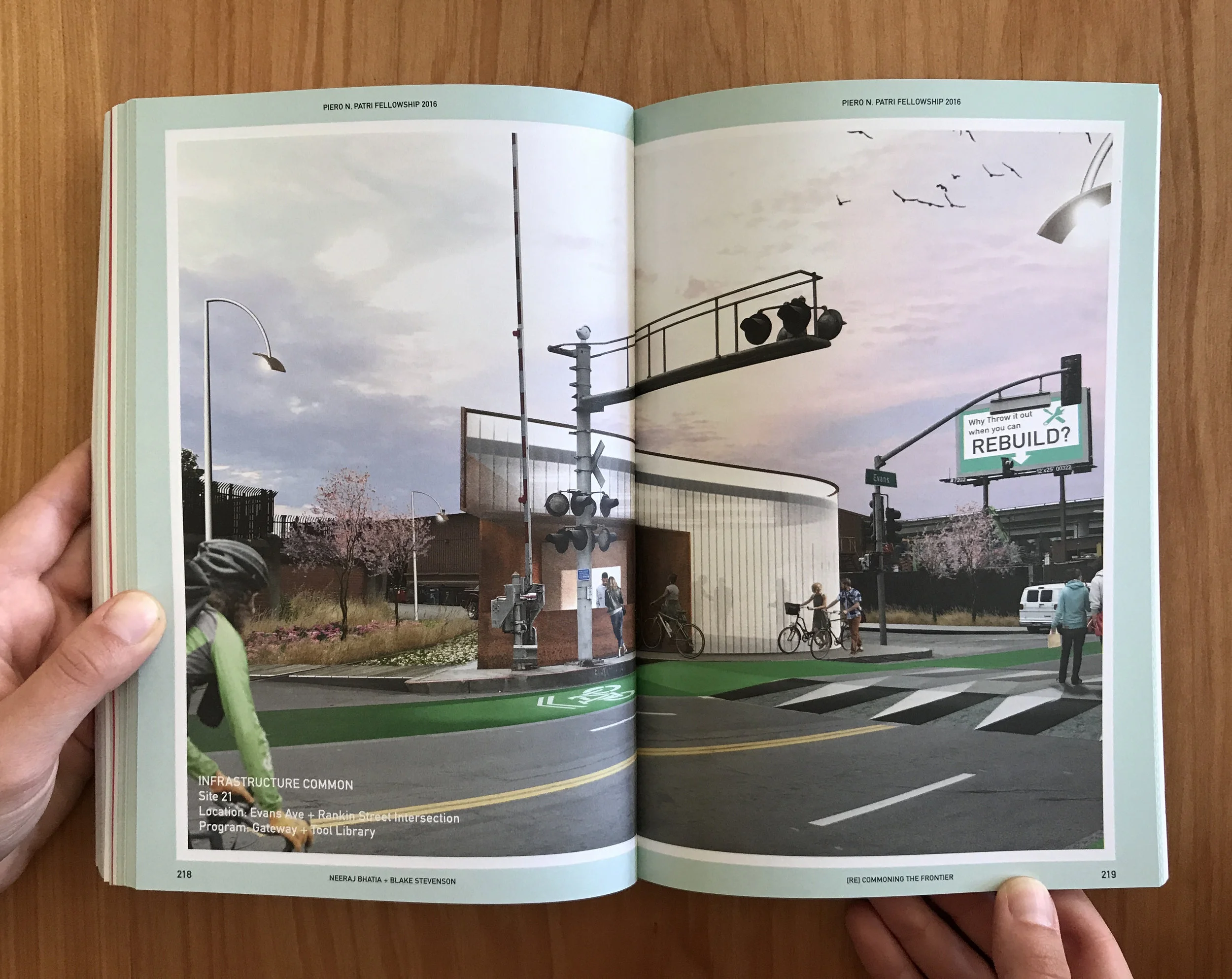[RE] COMMONING THE FRONTIER
SPUR Publishing, 2017. 309 Pages
Neeraj Bhatia & Blake Stevenson (Authors)
Liz Lessig (editor)
[Re] Commoning the Frontier examines how the displacement of existing residents in San Francisco’s Southeast Waterfront can be mitigated. Specifically, the book attempts to locate the agency for the spatial design disciplines in these discussions. One of the largest challenges in mitigating displacement, however, is that the reasons for leaving a neighborhood are multifaceted. The study focuses on two of the largest causes– economic necessity and cultural estrangement. Economic necessity is an individual concern that centers on the value to be gained from one’s land. The design research investigates different strategies to leverage property into a productive resource while being able to still live on the land. Cultural concerns are collective in nature and arise when existing residents feel that the institutions and amenities provided by a neighborhood no longer support them. The research reframes a series of contemporary commons– or, collectively shared resources– centered on making, to inject amenities that tap into the cultural legacy of the neighborhood while bringing people together. We re-engage the notion of the commons, one of the first uses of the Southeast Waterfront’s lands, to create an alternative to public space– positioning the concept of working together as a critical mechanism to embrace pluralism.
This book divides the study into three sections that move from a historical analysis to a present-day stock-taking to future projections. Chapter 1, The Factory of San Francisco, unpacks the various forms of development and manufacturing along the Southeast Waterfront and their unique imprint on the culture and residents of these neighborhoods. Chapter 2, Re-Urbanizing the Frontier, summarizes the current wave of development in an attempt to understand the transformations, physically as well as demographically, that are soon to occur in the Southeast Waterfront. The final chapter, Mitigating Displacement, hones in on the central interest in the Piero N. Patri Fellowship- how we can create tangible techniques to hold onto the unique cultures, uses, and people in the Southeast Waterfront. A combination of design and research, this chapter is divided into two approaches- one that operates at the scale of the individual and addresses property ownership and one that examines the scale of the collective and seizes cultural opportunities.
The words “frontier” and “commons” rarely appear in the same sentence as they involve different notions on how to manage land. The frontier is typically where land is converted to a private commodity, whereas the commons considers land as a collective resource. Our notion of re-commoning a network of spaces along the Southeast Waterfront re-engages a history where sharing, managing, and working together fostered social and cultural relationships. Re-commoning a frontier suggests that the value of land resides in the diversity of people living on the land. Enabling neighborhoods to evolve in a manner that benefits all residents– existing and new– requires collective empathy. Creating empathy begins with existing and new residents working together to understand what they hold in common.








